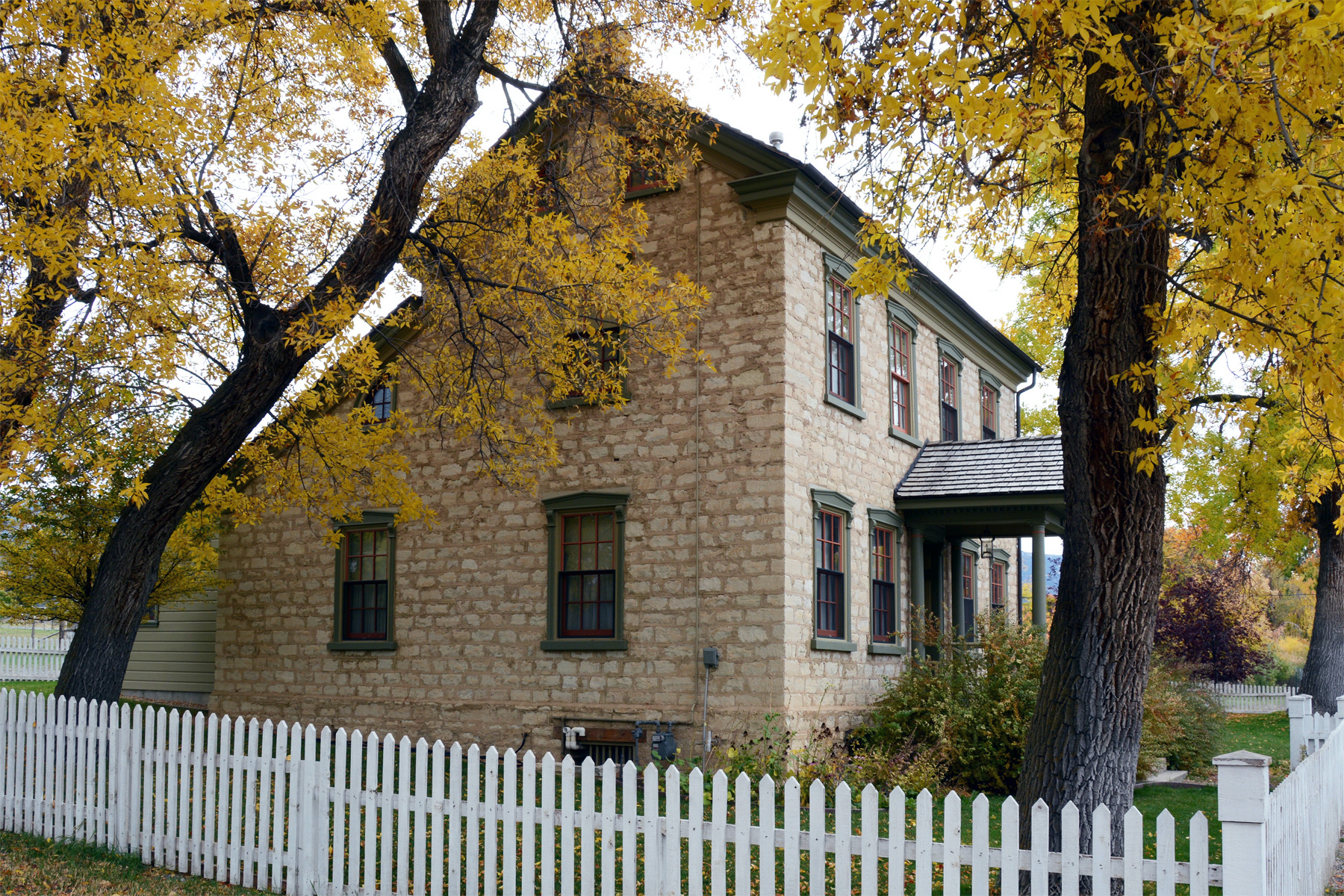Spring City, Utah
Spring City, Utah, is one of only two sites in the United States where an entire city is a Historic District on the U.S. National Register of Historic Places—the city limits of Spring City and the boundaries of the Spring City Historic District are one and the same.[1] Spring City is located about 17 miles north of Manti.
It is also a well-preserved example of an early Mormon settlement. There are four extant pioneer houses that date to the 1860s, twenty-four from the 1870s, and twenty from the 1880s. One 1905 home once served the community as a bishop’s storehouse. Other historic buildings include a rock Latter-day Saint chapel, stores, an old firehouse, theater, jail, and school. Most of the historic structures in Spring City are currently owned as private residences. The rock chapel is owned by The Church of Jesus Christ of Latter-day Saints.
"Mormon town planning in the Sanpete Valley closely followed an agricultural village system advocated by the LDS church leadership. By this design, dwellings were clustered together in town, which in turn were surrounded by individual farm holdings. . . . While all eleven communities in the upper Sanpete Valley are products of this system of farm planning, Spring City best represents the original nineteenth and early twentieth century character of the settlements."[2]
Elder Orson Hyde, was Spring City’s most famous resident. He was called to the first Quorum of the Twelve Apostles in Kirtland, Ohio in 1835. He spent the last years of his life presiding over the Latter-day Saints in Spring City. His grave is found in the cemetery immediately west of town on state highway 117.
Spring City was first known as "Allred Settlement" because the original 1852 settlers were led by James Allred and most of them were his family members. "Arriving in Utah in the fall of 1851, he was advised by Brigham Young to move to Sanpete and 'select a place for settlement where he could locate with his numerous posterity and kindred and preside over them.' On March 22, 1852, Allred and others explored the area along Canal Creek (southeast part of town). Four days later he returned with several of his sons and together with a number of men began settling the town. The first house, a log cabin, was situated on the southern edge of town on the east side of Main Street, near 500 South. During the summer of 1852, two adobe houses were constructed near the original log house, and the other near the spring. Also that summer, one of James Allred’s sons, James T. S. Allred, completed the first survey of the area. A tract of about 100 acres was divided into five-acre blocks. Some crops were planted and about 12 families spent the winter of 1852 in 'Canal' or the 'Allred Settlement.'”[3]
The settlement was abandoned in the summer of 1853 due to ongoing conflict with the indigenous Ute people of the area. It was reestablished as "Springtown" in 1859 by William Black, George Black, Joseph S. Black, James T. Ellis, and the Allreds.
Beginning in 1853, the Allred family and other church leaders began to encourage Danish immigrants to settle in Sanpete County, and, particularly after the community was reestablished in 1859, to join the Allred Settlement. By the mid-1860s locals referred to the north side of town as "Little Copenhagen" or "Little Denmark". Treaties were signed with the Native Americans in 1869 and Spring City was incorporated in 1870.[4]
Allred died in Spring City in January 1876.
